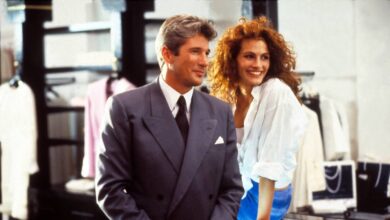Opinion | Britney Spears Wants to Be Free. It’s Time We Finally Take Her at Her Word.

I was never Ms. Spears’s target demographic. But because I was a media critic and music journalist when she exploded onto the scene in 1998, and because it was a time before social-media algorithms and atomized newsfeeds, there was simply no escaping those instant-earworm singles and the hype around the person singing them. The enthusiasm of Ms. Spears’s intended audience — teens and tweens who called into radio shows and crowded Times Square for MTV’s “Total Request Live” — was soon overshadowed by the reactions of adults from whom she sought neither attention nor approval. Grown men cast themselves as hapless bystanders magnetized by the exposed midriff and schoolgirl pigtails of a knowing Lolita. (One journalist led a 1999 profile by noting that the logo on the singer’s pink T-shirt was “distended” by her “ample chest,” a description that still makes my skin crawl.) Wide swaths of column space were given over to concerned mothers fretting that Ms. Spears’s undeniable sexuality posed a grave threat to the virgin eyes and ears of their own children.
From the beginning, Ms. Spears embodied an American ideal — a blond, white, Southern Baptist girl with a sweet drawl and impeccable manners — and so she was also the perfect screen on which to project adult anxieties in the name of protecting the children. The People magazine cover story “Too Sexy Too Soon?” set the template for pearl-clutching media. As she writes in “The Woman In Me,” she was “a teenage girl from the South. I signed my name with a heart. I liked looking cute. Why did everyone treat me, even when I was a teenager, like I was dangerous?”
Ms. Spears was already 18 when the People article came out, and the what-about-the-children angle didn’t stay fresh much longer. But a new age of tabloid media dawned in 2000, as Us magazine rebranded as Us Weekly and inspired a coterie of glossy gossip copycats, providing a brand-new outlet for a new bounty of concern. We were no longer worried about the children; now we worried about her. Ms. Spears, formerly not a girl and not yet a woman, was by 2001 not only a woman but the kind of woman beloved in the American narrative: Failed and felled by her own appetites, she was a woman we could pity rather than fear.
Recovering from a formative heartbreak, hitting the club, seeking new love, starting a family: Whatever Britney was doing, the tabloids declared, she was doing it wrong. She was heartbroken, or she wasn’t heartbroken enough. She partied too much and partied with the wrong people. She was romantically reckless. She made bad decisions. She was a bridezilla. She married the wrong man. She gained too much pregnancy weight. She didn’t lose the pregnancy weight quickly enough. She had her second baby too soon. She was acting erratically. She was a bad mother. She was out of control. She needed help.
There were valid reasons to be worried about Ms. Spears during that time. “The Woman in Me” is heartbreakingly frank about the postpartum depression she experienced after the birth of her sons. But the packaging of her increasingly chaotic life for mass consumption was only possible because the tabloids themselves instigated so much of the chaos. The ostensible focus of Us Weekly and its ilk was that celebrities were “just like us”: They walked their dogs, pumped their own gas, shopped for groceries. But the true guiding principle was that audiences had the right to know as much as possible about the famous — and the famous, by being famous, ceded any expectation of privacy. Proving that stars were “just like us” involved constant and active predation, and Ms. Spears was a profitable target. Hordes of paparazzi followed her wherever she went, cornered her in public, hounded and heckled her until, inevitably, they got what they were after: a very public breakdown.





